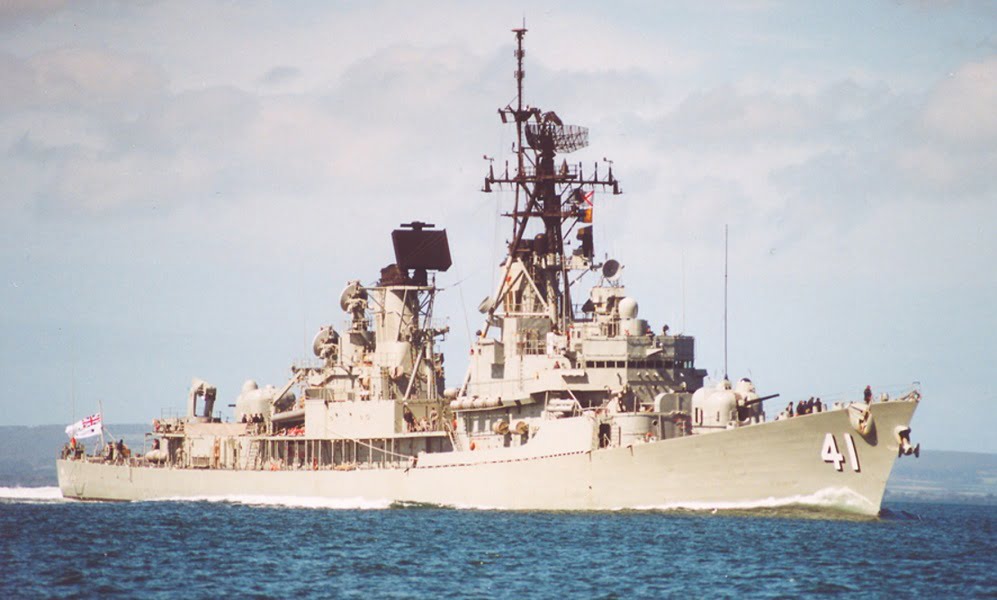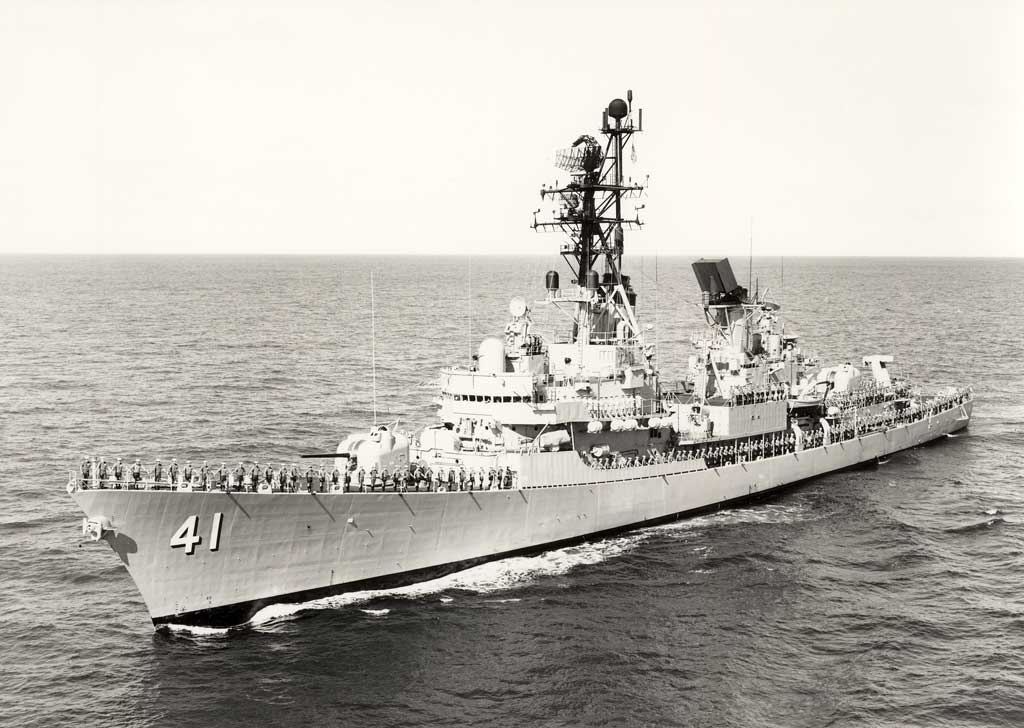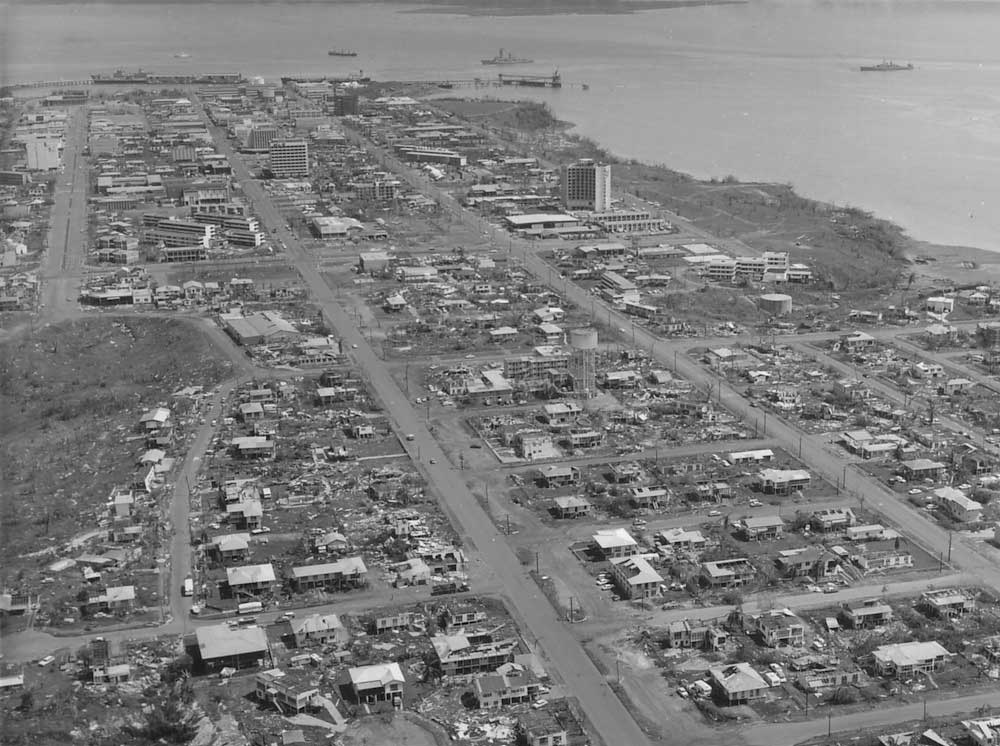By 1969, the Australian government could no longer resist the USA’s calls for the country to enter the Vietnam War. Due to Australia’s location, the Americans believed the Australian Navy particularly would be beneficial to the war effort. The Brisbane would ultimately become involved in the Vietnam War as a result– twice.
In January 1969, the Brisbane was prepared for her first deployment. She was ready to go by March and departed for Vietnamese waters on the 20th of the month. Brisbane arrived at Subic Bay in the Philippines on March 31st. There she underwent a brief workup to ready her for military action, then was eventually deployed to Vung Tau in South Vietnam, where she arrived on April 15th.
The same night, Brisbane was involved in her first mission; a naval gunfire support (NGS) mission. This meant that Brisbane was providing nighttime harassment fire 70 miles south of Saigon. As her stay in Vietnamese waters continued, Brisbane provided gunfire assistance to the Market Time operation, despite not being deployed directly to this mission.
Brisbane’s first stay in battle came to an end on May 18th, when she sailed to Subic Bay for maintenance, repairs, and shore relief for the crew.
Brisbane’s return to the theatre of war was on June 10th, alongside the USS Rowan, in support of Task Force South. Over the next four days, the Brisbane and the USS Rowan conducted just short of 200 NGS missions, mostly aimed at enemy base camps and areas of intelligence.
On June 30th, while Brisbane made her way to Singapore, she spotted the NV Sincere — a merchant naval vessel — in distress and on fire. The Brisbane dispatched a team of 71 officers and sailors to fight the fire, but they were unable to control the flames and the decision was taken for the Sincere to be abandoned. The crew of the Sincere was therefore taken on board the Brisbane, which then guarded the burning merchant ship until the arrival of a salvage tugboat named the Salvana on July 3rd.
Back in the theatre of war, Brisbane would soon suffer a difficult blow On July 22nd, while onshore bombardment duty, the Brisbane took damage to the forward gun turret. All onboard survived — save for a broken wrist of one crewman — but the damage to the turret was irreparable. The turret was removed when the Brisbane arrived back at Subic on August 3rd. A replacement would not arrive until September, so once re-deployed, the Brisbane primarily functioned as the head of the escort screen for the USS Oriskany.
The replacement turret was eventually fitted on September 25th. Brisbane then returned to Sydney, Australia, in mid-October for an extensive refit, which included the installation of an Ikara anti-submarine missile system. This refit was so all-encompassing that the Brisbane would not be complete until July of the following year. Brisbane is generally considered to have had a rather quiet entrance into the theatre of war, having only fired 7,891 shells during her six-month deployment.



